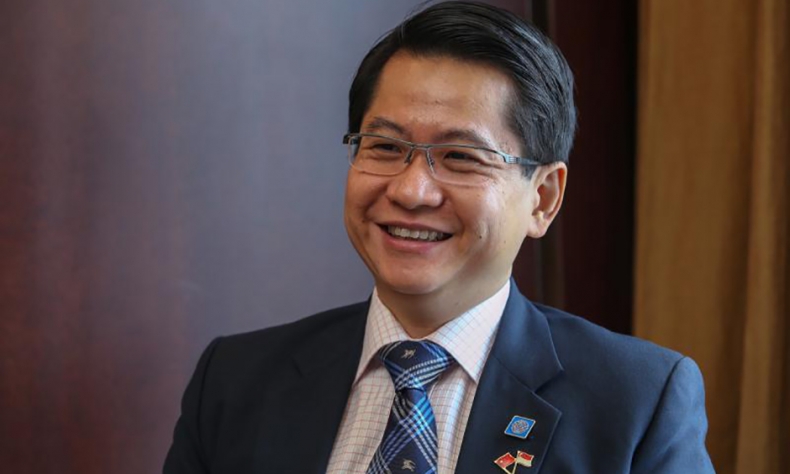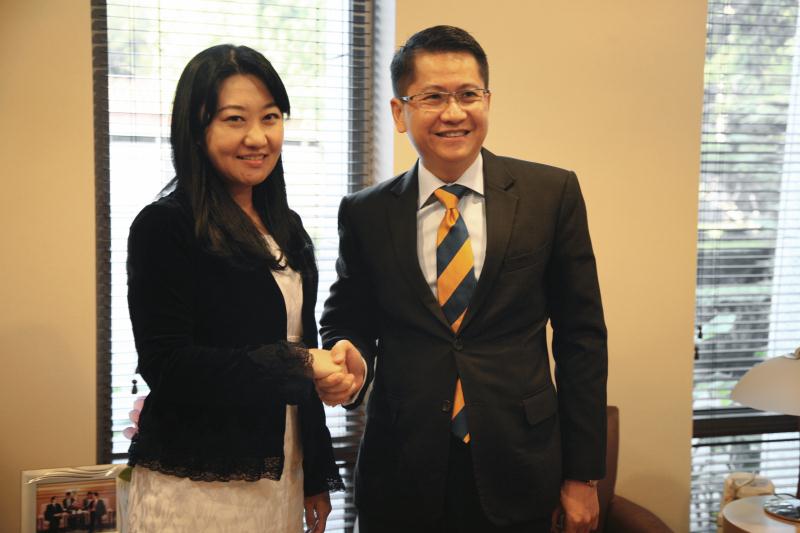
【Ambassador Interview】Singapore Ambassador to China: An All-round Cooperative Partnership Progressing with the Times
The Singapore government and the people are very concerned for China, and we also think that China’s peaceful development can bring tangible benefits to the world, to the region and, in particular to Singapore.
The Conference on Dialogue of Asian Civilizations, held on May 15-22 in Beijing, is the most important diplomatic event of the year hosted in China. China Focus, together with DRTT (Development Research Think Tank of China) Group and China Development Observation, has launched a series of in-depth columns titled “Ambassador Interview” to show you the point of view of the ambassadors of the Asian countries on the theme of the harmonious co-existence of various civilizations. Today we have an exclusive interview with Stanley Loh, Ambassador of Singapore to China.

Working with Chongqing to Build a Western Hub so as to Promote the BRI
Sun Chao: Singapore is not only an important country along the Belt and Road, but also plays a very important role in the Maritime Silk Road. The prospects for exchanges and cooperation between China and Singapore will be broader in the near future. How do you evaluate this initiative?
Stanley Loh: First of all, we welcome the Belt and Road Initiative. Asia does have this demand, and some of the existing mechanisms are not enough to meet this huge demand. The initiative will contribute to regional development.
In fact, Association of Southeast Asian Nations (ASEAN) also has a similar initiative. In 2010, ASEAN launched the “Master Plan on ASEAN Connectivity”, covering highway, railway, sea transportation, cable, optical cable and other fields, to strengthen the connectivity among ten ASEAN countries and the connectivity between ASEAN and its dialogue partners. We believe that the BRI and “Master Plan on ASEAN Connectivity” are highly complementary.

What role can Singapore play in the implementation of the BRI? First, we have launched a strategic demonstration project in Chongqing with China, which is also helpful to support the initiative as it was to connect the Silk Road Economic Belt with the Maritime Silk Road. China’s western region itself is the starting point of the new Silk Road Economic Belt, and Singapore is a key node of the Maritime Silk Road. The purpose is to create interoperability of the four sectors: finance, aviation, modern logistics, and communications and telecommunications industry. At present, we have carried out cross-border RMB business in Chongqing by using Singapore’s financial market to reduce the cost of investment in the Western region. More than ten months since the start of the mechanism, enterprises in Chongqing have already borrowed more than $6 billion dollars in funds by tapping into the market, and they can invest in China in full with a relatively low cost.
We also have other measures in place. In the aviation field,the frequency of flights will be increased in order to improve the expansion of the network and build a western China aviation hub together with Chongqing.
In logistics, the key is to combine several means of transport: rail, road, and river transport. A new proposal is with a combination of Chongqing’s transport hub to connect Singapore through a port of the Beibu Gulf. Currently Chongqing has two major freight routes. One is the westward Chongqing-Xinjiang-Europe railway; and the other is a passage through the river transport to the coastal port. At present, we are exploring a new transport road from the south to the Beibu Gulf.

Last but not least is the ICT industry. This area will play an important role in the future development. As long as we have a platform, the connectivity of information can create new business opportunities and improve efficiency in order to make finance, cargo, transportation and information communication more smoothly for the western part of China.
Traditionally, the economic and trade cooperation model was that Singapore invested in China and helped other foreign investors to invest in China, or bilateral trade. China gradually became a big foreign investor as its overseas direct investment has recently exceeded the scale of the attracted foreign investment. In this process, Singapore has also offered a lot of help. For instance, 60% financial management teams of the major regional infrastructure projects are from Singapore in ASEAN. The efficient financial hubs, well-developed communications and telecommunications environment, and the strong legal system will attract professionals to gather in one place to form an ecosystem. Singapore has already achieved such a business-friendly ecosystem. We hope to make a platform for Chinese enterprises going global. Political and ecological environment of countries along the Belt and Road routes sometimes are not the same, so we still need to understand the different characteristics of different places. We can provide the value of this part in the hope that we can work together to make the BRI a success.
“An All-round Cooperative Partnership Keeping Pace with the Times”
Sun Chao: In 2015, during President Xi Jinping’s visit to Singapore, the two countries established “an all-round cooperative partnership keeping pace with the times”, which means that the relations between China and Singapore will be upgraded. There is no doubt that China and Singapore will have a better tomorrow. What’s your view?
Stanley Loh: The Singapore government and the people are very concerned for China, and we also think that China’s peaceful development can bring tangible benefits to the world, to the region and, in particular to Singapore. So we have constantly explored how we can support China’s continuous peaceful development and how we can provide value for China’s development. When President Xi Jinping visited Singapore in 2015, the leaders of the two countries positioned the relationship as “an all-round cooperative partnership that keeps pace with the times”. Here, the most critical term is “keeps pace with the times”, which highlights the characteristics of our relationship. We can safefuly say that Singapore is the only country among various partners who enjoys the position of “keep pace with the times”.

The “keep pace with the times” partnership between China and Singapore reflects the essence of our cooperation. In the early 1990s, China focused on attracting foreign investment and industrial revolution , so we set up Suzhou Industrial Park. Thereafter, with the focus gradually turned to the green development and sustainable development, we developed the Tianjin Eco-City. When China was committed to economic restructuring and upgrading, we established the Guangzhou Knowledge City. With the development of China’s “Belt and Road” Initiative, Yangtze River Economic Belt, and the grand western China development program, we launched the Chongqing strategic interconnection demonstration projects with focus on the service industry and interoperability.
Singapore and China have broad prospects for cooperation and the key is that we both hope our cooperation could keep pace with the times. First, in addition to repeating the same practice in the past, we also continue to follow the new era, meet the different requirements with the capabilities of both sides, as well as innovation and new breakthroughs. Second, we also take what our partner’s needs into account in order to create an interdependent cooperation pattern of “each having something of the other”. I believe our countries will be better tomorrow.
Sun Chao is the editorial board member of China Development Observation, Vice President of DRTT Group, and author of New Order: Ambassadors’Views on the Belt and Road Initiative.
 Facebook
Facebook
 Twitter
Twitter
 Linkedin
Linkedin
 Google +
Google +










